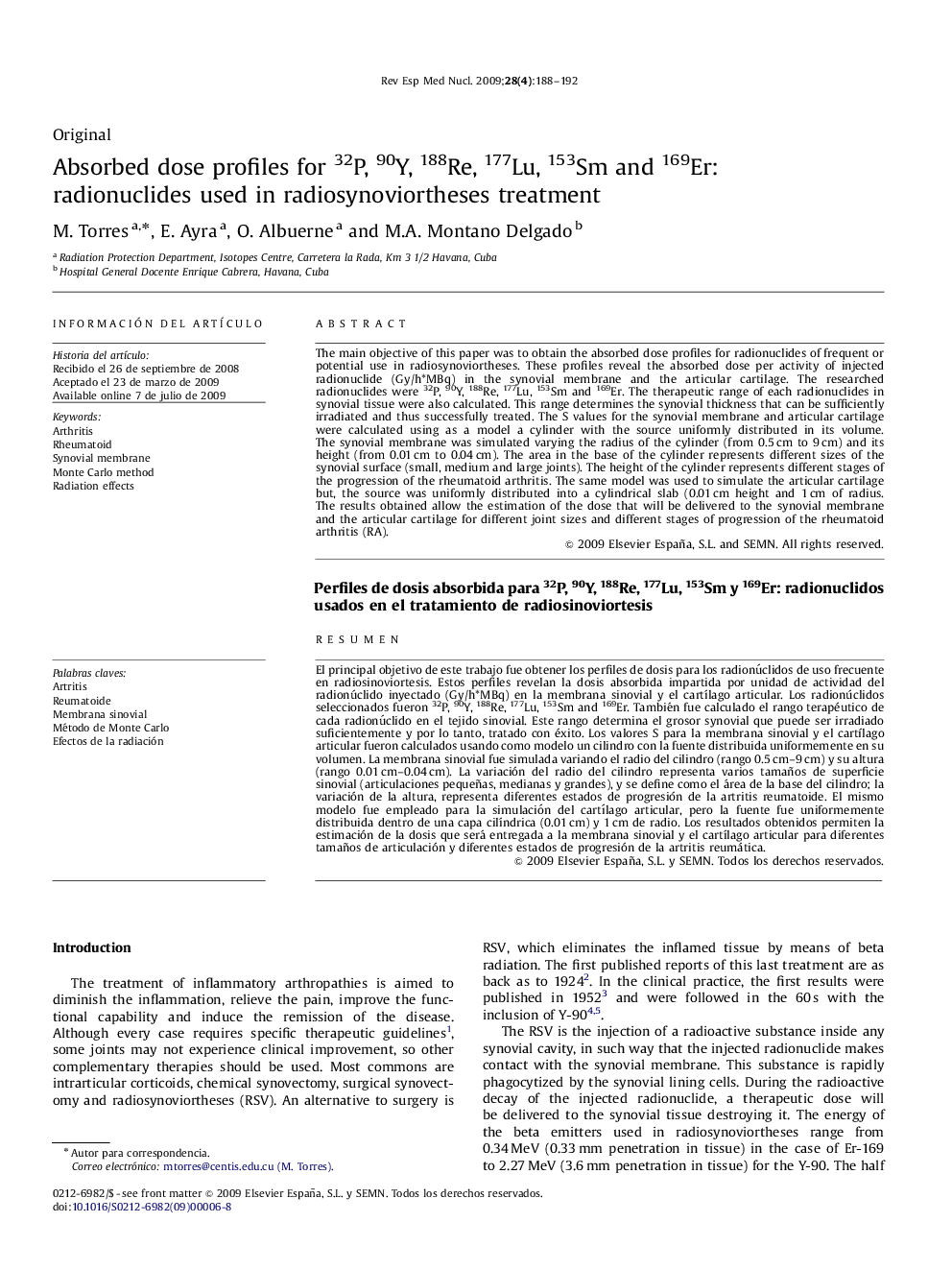| Article ID | Journal | Published Year | Pages | File Type |
|---|---|---|---|---|
| 4249058 | Revista Española de Medicina Nuclear | 2009 | 5 Pages |
The main objective of this paper was to obtain the absorbed dose profiles for radionuclides of frequent or potential use in radiosynoviortheses. These profiles reveal the absorbed dose per activity of injected radionuclide (Gy/h*MBq) in the synovial membrane and the articular cartilage. The researched radionuclides were 32P, 90Y, 188Re, 177Lu, 153Sm and 169Er. The therapeutic range of each radionuclides in synovial tissue were also calculated. This range determines the synovial thickness that can be sufficiently irradiated and thus successfully treated. The S values for the synovial membrane and articular cartilage were calculated using as a model a cylinder with the source uniformly distributed in its volume. The synovial membrane was simulated varying the radius of the cylinder (from 0.5 cm to 9 cm) and its height (from 0.01 cm to 0.04 cm). The area in the base of the cylinder represents different sizes of the synovial surface (small, medium and large joints). The height of the cylinder represents different stages of the progression of the rheumatoid arthritis. The same model was used to simulate the articular cartilage but, the source was uniformly distributed into a cylindrical slab (0.01 cm height and 1 cm of radius. The results obtained allow the estimation of the dose that will be delivered to the synovial membrane and the articular cartilage for different joint sizes and different stages of progression of the rheumatoid arthritis (RA).
ResumenEl principal objetivo de este trabajo fue obtener los perfiles de dosis para los radionúclidos de uso frecuente en radiosinoviortesis. Estos perfiles revelan la dosis absorbida impartida por unidad de actividad del radionúclido inyectado (Gy/h*MBq) en la membrana sinovial y el cartílago articular. Los radionúclidos seleccionados fueron 32P, 90Y, 188Re, 177Lu, 153Sm and 169Er. También fue calculado el rango terapéutico de cada radionúclido en el tejido sinovial. Este rango determina el grosor synovial que puede ser irradiado suficientemente y por lo tanto, tratado con éxito. Los valores S para la membrana sinovial y el cartílago articular fueron calculados usando como modelo un cilindro con la fuente distribuida uniformemente en su volumen. La membrana sinovial fue simulada variando el radio del cilindro (rango 0.5 cm–9 cm) y su altura (rango 0.01 cm–0.04 cm). La variación del radio del cilindro representa varios tamaños de superficie sinovial (articulaciones pequeñas, medianas y grandes), y se define como el área de la base del cilindro; la variación de la altura, representa diferentes estados de progresión de la artritis reumatoide. El mismo modelo fue empleado para la simulación del cartílago articular, pero la fuente fue uniformemente distribuida dentro de una capa cilíndrica (0.01 cm) y 1 cm de radio. Los resultados obtenidos permiten la estimación de la dosis que será entregada a la membrana sinovial y el cartílago articular para diferentes tamaños de articulación y diferentes estados de progresión de la artritis reumática.
